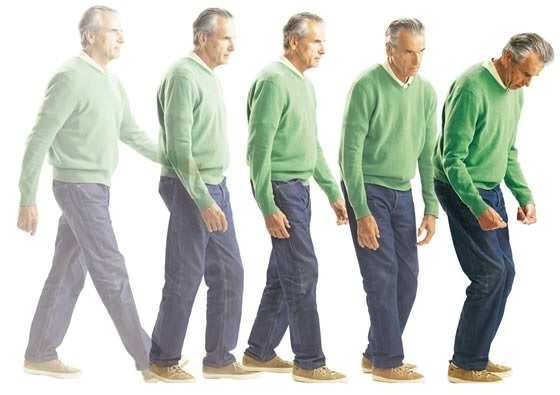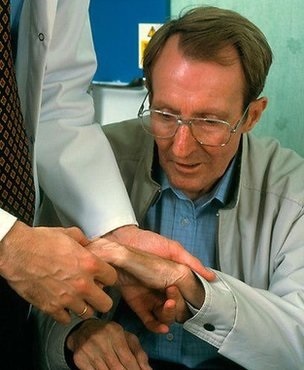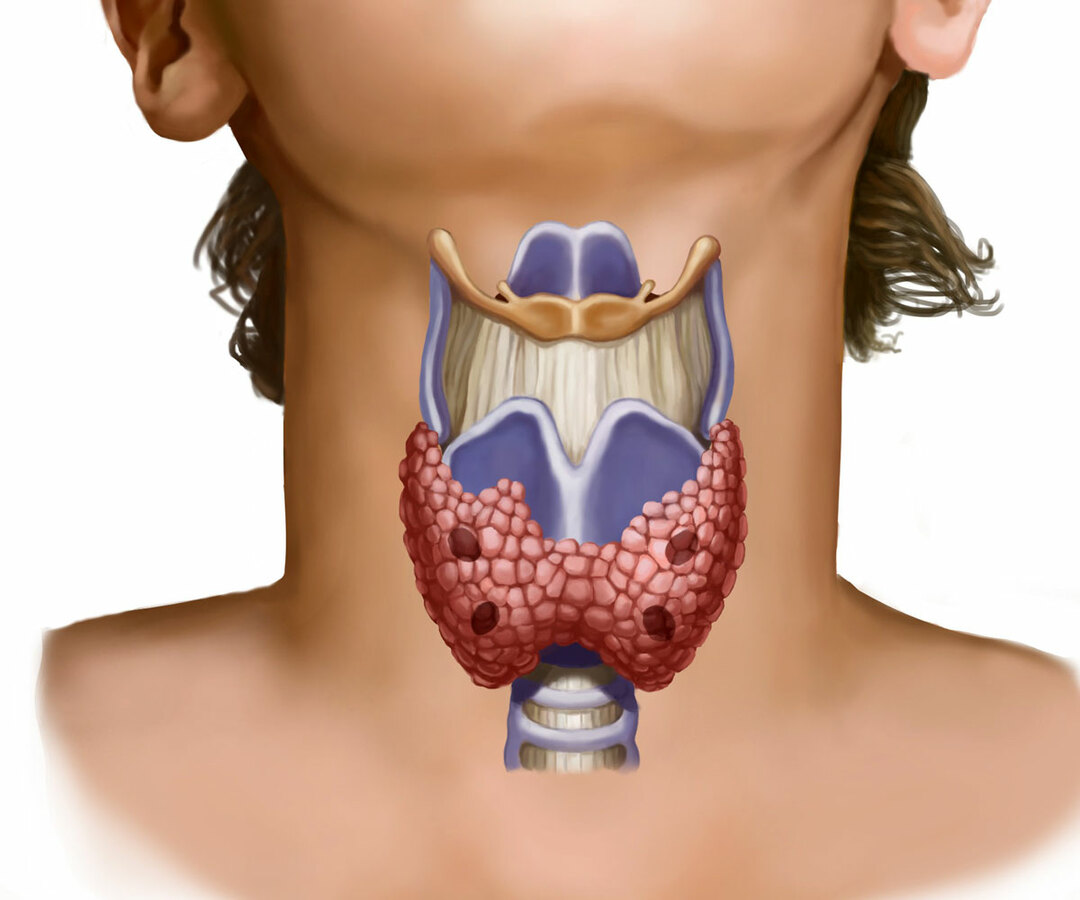Early manifestations of Parkinson's disease
 Parkinson's disease is a disease of the nervous system, manifestations of which are impaired mobility( hypokinesia) in combination with increased muscle tone, tremor( tremor) of the limbs and head, difficulties in maintaining the posture. It occurs with a frequency of 60-140 per 100 thousand population. Men suffer them more often than women. The first symptoms of Parkinson's disease develop usually at the age of 55-60 years, but there are cases of their appearance in 40 years, and earlier.
Parkinson's disease is a disease of the nervous system, manifestations of which are impaired mobility( hypokinesia) in combination with increased muscle tone, tremor( tremor) of the limbs and head, difficulties in maintaining the posture. It occurs with a frequency of 60-140 per 100 thousand population. Men suffer them more often than women. The first symptoms of Parkinson's disease develop usually at the age of 55-60 years, but there are cases of their appearance in 40 years, and earlier.
The disease is chronic, starting once, it will only progress. This syndrome reduces the quality of life, making even everyday activities inaccessible. Therefore, early detection of the first signs of Parkinson's disease, timely access to a specialist and the implementation of recommendations will slow it down.
How to identify Parkinson's disease?
The disease is manifested by a group of syndromes, which are already detected at an early stage. One of the first symptoms is the emerging difficulty of performing daily automated movements. Due to the violation of the right muscle contraction, the effect is incomplete, inadequate in strength. Early symptoms of Parkinson's disease:
- Violation of small movements: difficulties in writing, tying shoelaces, fastening buttons.
- Reduction of the amplitude of actions: shortening of steps and synchronized with them movements of hands.
- Mimic movements become less pronounced, the face looks "frozen", the frequency of blinking decreases.
- Difficulty in the simultaneous execution of several actions.
- Constipation.
- VSD( profuse sweating);
- Impaired smell.
At first the disorders are poorly expressed and manifest as complaints of "fatigue", clumsiness. Patients note that the usual actions began to take more time, they require active concentration.
 At the first stage the disease affects several muscle groups, and then it is transmitted to the rest. Because of this, at the initial stage, the handwriting changes: at the beginning of the line the letters are similar to those that were before the initiation of the ailment, and by the end of the line they become more and more small and uneven.
At the first stage the disease affects several muscle groups, and then it is transmitted to the rest. Because of this, at the initial stage, the handwriting changes: at the beginning of the line the letters are similar to those that were before the initiation of the ailment, and by the end of the line they become more and more small and uneven.
For simple symptomatology, simple tests are used:
- rhythmic alternating tapping with the thumb and forefinger on the table;
- foot padding;
- smooth alternately squeezing and unclenching hands into fists.
Important! Movements should be smooth, rhythmic and do not cause difficulties when performing movements.
In patients, muscle tone increases, which is why movements in the joints are difficult. The severity of the symptom during the day is unstable, the tone decreases after rest, increases with stress. Because of the constant muscle tension, there are pains in the back or joints of the shoulders, which is often the reason for contacting a doctor. At this stage, it is difficult to make a correct diagnosis, so treatment is prescribed later than required.
Tests that help to identify symptoms of rigidity in Parkinson's disease:
- Compress one hand into a fist, the opposite muscle tone will also increase( a symptom of Froman).
- The subject relaxes the muscles of the hand, and the researcher produces passive movements by it. Because of the muscle hypertonicity, it will be hard to do.
Other characteristic features include:
- tremor;
- postural movements.
Tremor begins with a slight trembling of the fingers of the fingers at rest. At the onset of action, it weakens, but intensifies when it repeats. When walking, tremor of the hands becomes more pronounced. To activate it also leads to the need to take and maintain a permanent posture. With the progression of the disease, new muscle groups are captured, becoming more active. During sleep usually passes. This symptom makes it difficult to eat, dress, any small actions.
Postural movements are manifested by impaired coordination. It becomes impossible to maintain balance, which in combination with the remaining symptoms causes a fall. Outwardly this is manifested by "treading" on the spot if necessary to change the direction of movement or stop. To identify this syndrome, the patient shifts his heels and socks together, and the researcher unexpectedly, but not strongly pulls him back. To maintain balance in Parkinson's disease, you need to take a couple of steps to the side or back.
Additional symptoms of
In addition to the main symptoms, there may be additional initial symptoms of Parkinson's disease:
- Twitching of muscle groups, accompanied by numbness and tingling of the body.
- Problems with urination: frequent or frequent nocturnal urges.
- Violation of coordinated work of muscles causes swallowing problems.
- Because of problems with swallowing, there is a buildup of saliva and its expiration.
- Visual impairment and eye movement.
Symptoms of Parkinson's disease in women do not differ from those of men. Parkinson's disease is associated with old age in many people, so few people think about it in advance, and then going to treat it. However, it greatly reduces the quality of life and does not allow you to enjoy its pleasant moments. Knowing how Parkinson's disease manifests will allow you to pay attention in time to anxiety symptoms and turn to a neurologist. The specialist will select a treatment that will contain manifestations of the disease.
write the question in the form below:



